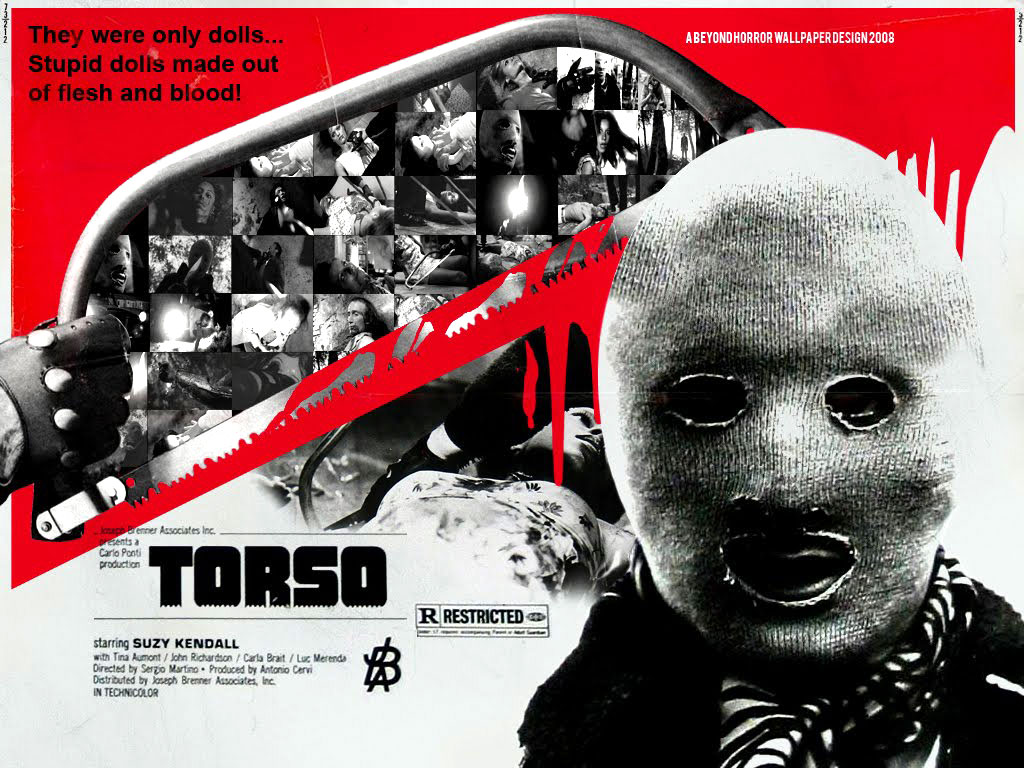Viewers of gialli would be hard-pressed to find a film that ticks more of the genre’s boxes than 1973’s Torso, from writers Ernesto Gastaldi and Sergio Martino, with direction by Martino. It has copious amounts of gratuitous nudity, a killer who stalks women, a final reveal of the killer’s motivations that makes little sense, and enough blood and guts that the film bleeds over into the slasher horror genre.
In Perugia, Italy, a killer sets his sights on lovely female students of a local university. The women are stereotypical free spirits of the age; into drugs, sex, and nude sunbathing. They stand out amongst the stodgier parts of contemporary Italian society, not least because their miniskirts reach nowhere close to the knees. Martino seems to take glee in showing the clash between the prudes and the debauched.
After the killer murders and mutilates his first two co-eds, Flo and Carol (Patrizia Adiutori and Conchita Airoldi), their friends and fellow students have had enough of the city and its dangers, and decide to head to a villa in the countryside for a long weekend. One of them in particular, Daniela (Tina Aumont), needs the break, as she has been dealing with an unrequited stalker since her childhood, Stefano (Roberto Bisacco), whom Martino points to strongly as the killer.
It could be him. Or, it could be an art history professor (John Richardson), or a lantern-jawed character who keeps popping up but doesn’t have a line until well into the film (Luc Merenda), or someone viewers haven’t seen. In giallo, the killer could be any man in the cast, with the exception of the requisite police inspector (Luciano De Ambrosis). Part of the storytelling conceit of giallo is that all clues and consistency can be ignored in service of a final twist.
Either way, there are now four young, beautiful females (besides Aumont, there are Carla Brait as Ursula, Angela Covello as Katia, and Suzy Kendall as Jane) in an isolated location ripe for some culling. Martino hurries things along here, as he has to get us to a final act where  the killer is stalking a last survivor through the villa. It’s a very tense segment that takes up about the final third of the film, and packs a visual punch, despite Martino pulling back on the gore.
the killer is stalking a last survivor through the villa. It’s a very tense segment that takes up about the final third of the film, and packs a visual punch, despite Martino pulling back on the gore.
It’s the bloody violence and fear that cross this film into horror. Martino’s characters are under quite a lot of stress, what with their friends being murdered, but he has them keep a cavalier attitude about it all until it’s their turn at the killer’s blade. That seems a natural reaction. Dwelling on the murders, all while wondering who will be next, is too traumatic to keep on one’s mind twenty-four hours a day. We get little moments of this when, amongst the fun and relaxation, the mere sound of a doorbell causes an instant flash of panic in the characters. It becomes inevitable that this villa, meant to be a refuge, is turned into an abattoir.
The final act is what makes this film worth watching. It comes on suddenly and unexpectedly. The final reveal is an eye-roller, not because of the killer’s identity, but because of his motivations. It’s what I would call psychologically ignorant and implausible. Yet, that doesn’t really matter. Why a killer does what he does isn’t the most important thing in a slasher. What makes this film work is the visceral stuff — the final girl tiptoeing around the villa searching for an escape while the killer is taking a bow saw to a corpse, et al. This is a film that predates Halloween by half a decade, and here are all the themes that made that later film such a groundbreaking success.
Releases of Torso have been cut up in myriad ways over the decades. The initial American release in 1975 was particularly ruthless with the nudity and gore. Viewers will know they’re watching the most complete version if the original Italian opening credits are restored, and the film is in Italian with English subtitles. There is no proper English dub, as the voiceovers from 1975 didn’t include the scenes that had been cut.
